Most wine lovers and a good number of wine professionals are not aware that up until the early to mid-twentieth century, Montalcino’s most famous wine was not Brunello, but rather a white wine made with a local Moscato Bianco biotype. The grape was called Moscadello, and the wine Moscadello di Montalcino. It was a sweet wine ranging from delicately off-dry to downright luscious and that had many fans everywhere. This was a very common occurrence with sweet wines centuries ago: back then, it was sweet, not dry, wines that were the most popular and costly (just think of Tokaj, Sauternes, and Picolit, for example, wines that were most sought after and graced the dining tables of royal families all over Europe). Unfortunately, just like it is with most sweet wines everywhere nowadays, Moscadello di Montalcino has fallen on much harder times. Only eleven producers of this once famous wine remain, and even at the wineries where it is still being made, it is never that estate’s most important wine. This is very understandable, given the potential magnificence of Brunello di Montalcino, truly one of the world’s great red wines. Clearly, it is only logical that estates concentrate their efforts on producing and selling Brunello (as well as their Rosso di Montalcino). However, to see Moscadello di Montalcino slowly but surely disappearing from many estates while its production numbers fall precipitously over the last few decades even where it is being made is a pity. It is something I have thought long and hard about doing something positive about, if possible.
My love for Montalcino and its many wines, Moscadello included
Montalcino is a blessed hamlet located in one of the most beautiful countrysides of Italy. As if that wasn’t good fortune enough, the hamlet also happens to make one of the world’s greatest, most ageworthy red wines (Brunello di Montalcino) and a deliciously good, easier-going, more approachable red (Rosso di Montalcino) that is probably underrated, considering just how good it is. The third wine of Montalcino’s glorious trifecta of local wines made with native grapes is Moscadello di Montalcino, the area’s only noteworthy white wine.
What’s so great about Moscadello di Montalcino and why bother even thinking about it, you ask? Well, from both an historical and quality perspective, Moscadello di Montalcino deserves better than to be banished into oblivion. But if all I do is just sit around and complain I’m really not helping anyone: not Moscadello the grape, not Moscadello the wine, and not its producers. And so, just like it has been for many other Italian native grapes [for example, Nebbiolo Rosé, Malvasia Puntinata (aka. Malvasia del Lazio), Malvasia Bianca di Basilicata, Pecorino, Tazzelenghe, Trebbiano Abruzzese, Malvasia di Schierano, and many many other Italian native grapes] that have since been replanted in earnest in their original regional homes, I have humbly supporting and made myself available for Montalcino’s producers who might be interested in trying their hand at reviving the Moscadello di Montalcino wine. Clearly, all I can do is explain and encourage local producers to understand why not reducing Moscadello di Montalcino to an afterthought (when not dismissed completely) might be a good idea, but the onus and eventual merits of Moscadello di Montalcino’s resurgence must go, and will go, first and foremost to the producers and their consorzio for all that they will undertake in the years to come on Moscadello di Montalcino’s behalf. Encouragingly, I have witnessed during some Montalcino winery visits an increasing interest in this wine, with a number of owners and winemakers being open to perhaps making small batches of this once very important wine once again. Time will tell; unfortunately, at some estates they are also considering reducing production further.
Moscadello di Montalcino is potentially yet another great ambassador of Montalcino’s wines and one of Italy’s best sweet wines. After all, anybody venturing to say that the Moscadello di Montalcino of La Poderina and that of Col d’Orcia (called Pascena) are arguably among Italy’s best twenty-five best sweet wines or so wouldn’t really be too far out in left field. And so I ask: why should a wine that can be so good, with centuries of positive and downright illustrious history behind it, be banished from everybody’s taste buds? I think not.
A little bit of history
Moscadello di Montalcino gained its official denomination status in 1984 (with ensuing modifications up to 1995), but the wine was characterized by a long and distinguished history long before then. In fact, if and when you read of “thousands of hectares” planted in the Montalcino territory in centuries past (for example around the town of Buonconvento), you need to know that those were all mostly vineyards planted to Moscato Bianco, not to Sangiovese. Apparently, the cultivation of Moscato Bianco in the Montalcino territory began during the Renaissance (which lasted from about 1350 to 1500, though some historians apply a broader time frame, making it last up to 1600). For example, documents dating back to 1372 describe a Moscadello planted near the Madonna del Soccorso, a church located right in the middle of Montalcino and that you can visit still today. Numerous famous men of letters and luminaries (not just from Italy) have sung the praises of the wine. And while it’s not always clear if it was specifically Moscadello of Montalcino that these people were talking about, it seems likely that it would have been, given that back then it was Montalcino’s Moscadello that was one of, if not the, most famous of such wines. Pietro Aretino, a famous playwright, poet, and satirist of his time, wrote in 1540 about the goodness of Moscadello. Sante Lancerio, likely the world’s first official sommelier (he was the bottigliere of Pope Paul III of the Farnese family from 1534 to 1549) wrote of a “golden-looking Moscadello” wine that he much appreciated for its off-dry characteristics (so interestingly, not lusciously sweet as an air-dried wine would have been). Another Pope, Urbano VIII (of the Barberini family: he was Pope from 1623 to 1644) also spoke fondly of Moscadello wine and wanted it served at his court. In his famous seventeenth century dithyramb, Bacco in Toscana, Francesco Redi (1626-1698) praised it so: “That so divine and light moscadelleto of Montalcino”. Also, the famous Italian poet Ugo Foscolo, born in Zante in 1778 and who died in London in 1827, mentioned this dessert wine in one of his letters.
Unfortunately, Montalcino’s Moscato Bianco biotype (called Moscadello locally, but it’s actually Moscato Bianco) was almost completely destroyed by Phylloxera at the end of the nineteenth and early twentieth century. Even more unfortunately, when the vineyards were replanted, many estates just chose to go with nursery Moscato Bianco clones from Piedmont, which is always much easier to do than going around looking for (healthy) massal selections. At the time, unlike today, the importance of massal selections was not yet clear; but to go with nursery clones was a logical step, given that there was little if any of Montalcino’s original Moscato Bianco biotype left in the vineyards. With hindsight, this was clearly a pity, because the genetically pure strain of what was a grapevine growing only in, and typical of, Montalcino’s terroir was mostly lost. At many estates there were still old Moscato Bianco vines growing as recently as the 1970s, but these were mostly uprooted, either because of diseased and/or poorly productive and because of generally poor sales (for example, Tenimenti de Ricci had a good deal of older vines of local old Moscato Bianco in their vineyards, but unfortunately uprooted it about ten years ago). Over the years, I have talked at length with every present and past producer of Moscadello di Montalcino and have compiled a huge amount of information that will be included in my upcoming, huge, book on Montalcino and its wines. Suffice it to say that the late, great, Franco Biondi-Santi, whom I talked with at length on the subject (“You’re the only one who ever bothers to ask me about my work with Moscadello, everybody always wants to know about Brunello only” he used to tell me) was especially interested and involved in safeguarding old Moscadello biotypes, and happily, he wasn’t the only one. In this light, the work performed by the Col d’Orcia winery is nothing but commendable, actually leading to the establishment of an official Montalcino Moscato Bianco “Moscadello” clone, that is available for sale and for replanting by wineries should they be so inclined. At Col d’Orcia, already in the early 1990s, they started studying and working on their Moscadello grapevines, and in the 2000s, set out to identify an ideal clone to propagate. In this light, they began a collaboration with Florence University relative to their Moscadello’s ampelography (with Professor Bandinelli) and also with the University of Pisa (with professor Triolo) relative to the health status of the grapevines. They planted the biotypes from their specific old moscadellaie most of which were next to the buildings (moscadellaie is the old name used to describe Montalcino’s vineyard plots planted only to Moscato Bianco; moscadellaia is the singular word). This research was essential because it has always been well-known in Montalcino that there existed different Moscadello biotypes; and while it is generally believed that the older vines were always loose-bunched, this wasn’t always the case: for example, Moscadello grapevines from Livio Sassetti were much more compact than those of Tenimenti de’Ricci, for example. More on this subject to come in the years ahead, promise.
The wine
Today, Moscadello di Montalcino can be made in three versions: still, sparkling and late harvest. The first two are delicious and have much in common with Moscato d’Asti wines from Piedmont; by contrast, it’s the Montalcino late harvest wines that reach quality zeniths of at times truly uncommon, high, level. (Credit must be given to Col d’Orcia for pushing to bring the Vendemmia Tardiva (late harvest) version into legislation.) The colour can range from pale straw yellow of the still and sparkling versions to the golden-yellow, almost amber hues of the late harvest renditions. The aromas and flavours are typically and recognizably those of Moscato Bianco; orange blossom and other white flowers, tangerine jelly, and grapefruit nectar tend to dominate. Clearly, the late-harvest versions (vendemmia tardiva) are more honeyed and sweeter. And while the still and sparkling Moscadello di Montalcino should be drunk young, the late harvest wines, while delicious already when young, can develop and gain in complexity even five to ten years after the vintage.
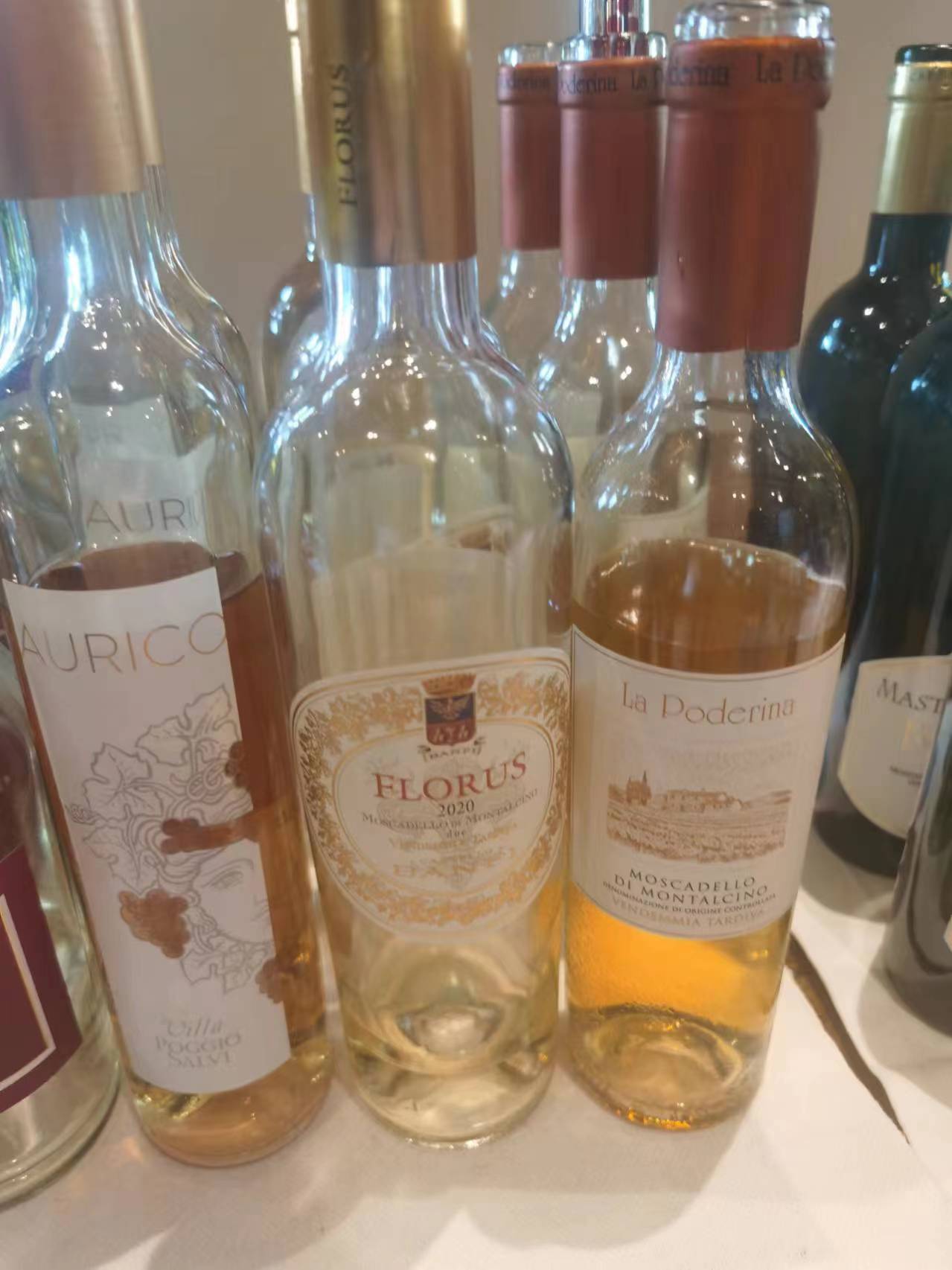
Recently, production of Moscadello di Montalcino has been made much harder by the advent of climate change. Much like in Germany they are rarely able to make Eisweins anymore (it just doesn’t get cold enough) or the quality of noble rot in France has been impoverished (if and when it’s present at all), unstable and generally too hot weather has been wreaking havoc on the production of Moscadello di Montalcino too. Many growing seasons are now too hot and dry, or even too rainy and marred by hail and unseasonal frost episodes, and Moscato Bianco is not one of the hardiest of grape varieties. In Montalcino, growing it at higher altitudes helps to a degree, such that it can be picked at the end of August and beginning of September; at Poggio Villa Salvi and Caparzo they are often able to push harvest into October, but that is the exception, rather than the rule. So while some wineries make true late harvest wines, at other wineries they prefer to make Passito-styled wines (from air-dried grapes). In the past, there was a lot more noble rot in the area than there is nowadays, and the wine profile has therefore forcibly changed over the last two decades. For example, up until the beginning of the 2000s. there was lots of fog in the area, and, it follows that there was also lots of noble rot. Back then, performing three or four passes in the vineyard was absolutely necessary to make the best possible wine. Unfortunately, over the years noble rot has virtually disappeared from the Montalcino production zone and so this wine is nowadays made more like a passito a true noble rot-affected late harvest wine. Air-drying grapes and making wine with them has always been an Italian trademark (never mind all the sweet wines made in that way, just think of Amarone!), right from the time of the ancient Romans, whose passito wines were all the rage. And so it can’t surprise that at Banfi they make the wine by blending grapes that have been air-dried in special rooms and grapes left on the vine but with their stalks severed. The grapes that are going to be air-dried are usually picked in August, while the others are left on the vine for another two weeks (not longer than that for ripening happens very fast in Montalcino). This is wine at really low altitudes in Montalcino, Moscato Bianco needs to be picked early, at times even earlier than mid-August, making for a situation that is not conducive to making highly complex wines.
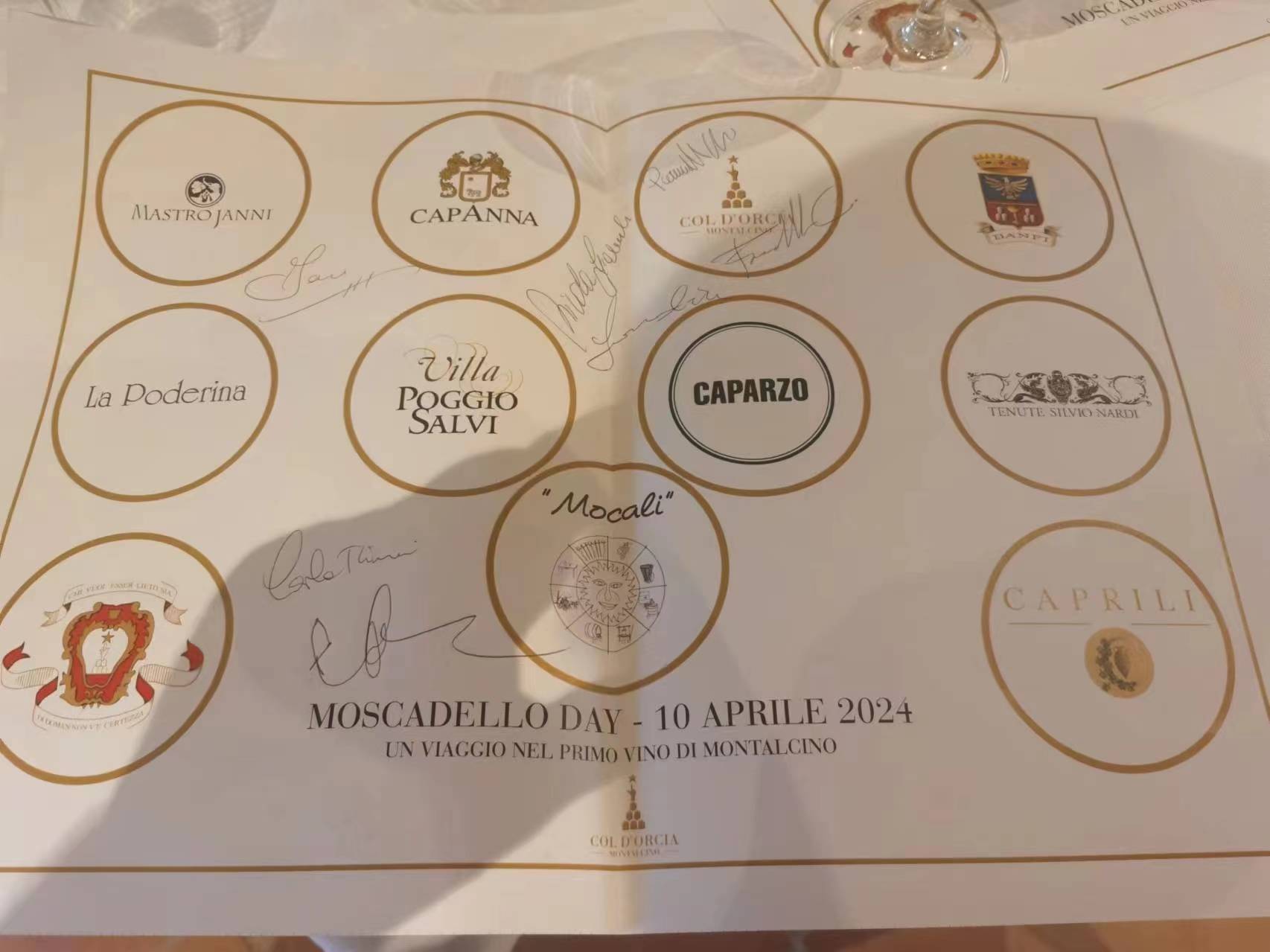
The wineries leading the way
Overall, there’s officially fifty hectares planted to Moscato Bianco, but only about 35 hectares are used to make Moscadello di Montalcino (compare that to the whopping 2100 hectares planted to Sangiovese and used to make Brunello di Montalcino).
The eleven wineries currently producing a Moascadello di Montalcino are (in alphabetical order): Banfi, Capanna, Caparzo, Caprili, Col d’Orcia, Il Poggione, La Poderina, Mastrojanni, and Villa Poggio Salvi. Vine age of the Moscato Bianco vineyards at each estate differs slightly. For example, it’s 20-22 years of age at Caparzo; 20 to 30 years of age at Capanna; 20-30 years of age at Banfi; 20 years of age at Villa Poggio Salvi; 20 years of age at Mastrojanni (but they have a few vines dating back to 1992); and about 34 years of age at Col d’Orcia (planted in 1990).
As far as vintages to look for, the 2016, 2018, and 2019 vintages were all very good for Moscadello di Montalcino, while 2017 and 2021 leaved a little to be desired (2017 was just too hot and 2021 was hit by frost on April 7 and 8, reducing yields and hampering wine quality).

The wines in this tasting report
All the wines in this report were tasted at the Col d’Orcia winery of Montalcino in the presence of all the winemakers and/or vineyard managers, along with Carlotta Salvini of the Consorzio. To its credit, the Consorzio wished to be present and show its support for this meritorious initiative; keep in mind that the current director , the talented and extremely knowledgeable Andrea Machetti was for decades the man in charge at Mastrojanni, one of the leading estates in Moscadello/sweet wine production in Montalcino. Last but not least, the biggest thanks of all goes to Francesco Marone Cinzano for being so passionate about the idea of doing something for Moscadello di Montalcino and helpful in setting this “meeting of the minds”/round table discussion and subsequent tasting. A true gentleman of uncommon vision, he fully understands that it would be a pity to forget about and/or risk losing a wine that is not just historic and important, but that offers Montalcino producers yet another market sales option in their armamentarium of wine offerings, a portfolio that is otherwise essentially limited to red wines only.
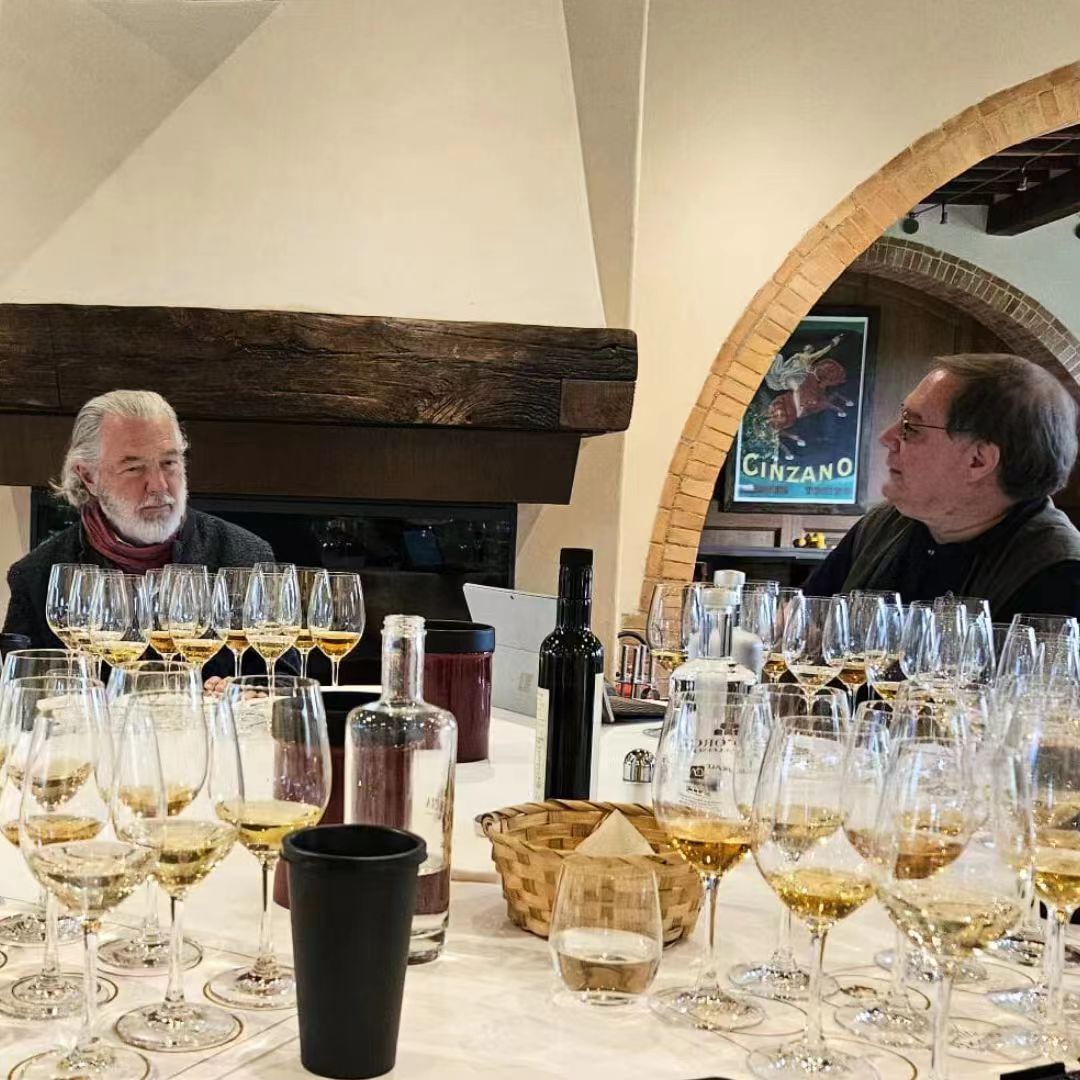
Banfi.
Banfi 2020 Moscadello di Montalcino Vendemmia Tardiva Florus 94
Luminous deep golden yellow colour. Bright flavours of apricot, peach, chestnut, honey and mango are nicely delineated and focused. Very clean and long, this is an absolutely lovely Moscadello di Montalcino that is not too sweet (only 75 g/.s.), boasting a very fresh aftertaste that will invite you to have another glass as soon as you finish the previous one. This is made with partly air/dried grapes and partly with grapes left on the vine but with their stalks severed; it is also partly fermented in oak barrel and partly in stainless steel, and aged 20% in 350 liter oak barrels and the rest in stainless steel. Banfi has long believed is wine, and though it doesn0t make as much as it would like or could given the current state of the market for sweet wines, the winery deserves credit for having always turned out a delicious Moscadello di Montalcino, a wine that is good as their Brunellos and deserves much more attention. Drinking window: 2024-2028.
Banfi 2019 Moscadello di Montalcino Vendemmia Tardiva Florus 93
Delicate golden amber. White flowers, caramel, lemon peel, quince paste and crystallized apricot on the nose and in the mouth. Luscious but lifted, this boasts bright juicy acidity and a nicely mouthcoating texture. Elegant and very long on the finish, which features a nobly delicate bittersweet (85 g/L r.s.) element. It’s hard to pick between this vintage and the 2020, they are both excellent. Drinking window: 2024-2029.
Caparzo.
Caparzo 2010 Moscadello di Montalcino 92
Deep bright golden yellow. The evolved nose doesn’t seem especially aromatic, hinting at candied apricot, grapefruit nectar, toasted almonds and faded white flowers. Then lively and fresh in the mouth, with similar flavours to the aromas. Finishes very smooth and very classically dry. This wine is made from 1.3 hectares situated right by the building, in an area that is not too humid but where noble rot still strikes late in the season, such that at Caparzo they try to late harvest, if and when possible around mid-October. The wine is partly barrel-fermented and partly aged in oak; about 4000 bottles are made depending on the vintage’s characteristics. At Caparzo they have long made one of the best Moscadello di Montalcino wines, practicing late harvest and late releases (even though this wine is from the 2010 vintage, it is the one currently on sale). Caparzo first made a Moscadello di Montalcino back in 1996, but doesn’t make it every year: Moscadello was then produced from 1998 to 2007, then in 2009 and 10 and again in 2015 and 2016. Drinking window: 2024-2029.
Caparzo 2007 Moscadello di Montalcino 92
Amber-tinged golden brown colour. Madeira, Sherry-like oxidative nuances of almond and grilled hazelnuts, lemon peel and herbs dominate the pretty nose. Straightforward in the mouth, with an almost skeletal frame with some sweet fruit flavours (82.4 g/L r.s.) adding a little flesh to the notes of grilled nuts, herbs, peppery spices and a hint of toffee; with its oxidative nuances, this actually reminded me more of a Vin Santo than of a typical Moscadello di Montalcino. Closes long and juicy, with noteworthy acid lift (5.2 g/L total acidity) despite 2007 being a very hot year (some of the worst ever Brunellos in memory were made in 2007) but because of Caparzo’s position in the fresher, cooler northern side of the Montalcino hill they were better off than many other estates in that forgettable year. Drinking window: 2024-2029.
Caprili.
Caprili 2023 Moscadello di Montalcino 91
Bright golden/tinged straw yellow. Fresh aromas and flavours of yellow apple, grapefruit, peach nectar and orange zest. Fresh and lively in the mouth, this expands nicely on the long, slightly fizzy back end. At 84 g/L residual sugar and 4.6 g/L total acidity (and importantly, a 3.3 pH) this is well-balanced and clean, but I found its fizziness to be somewhat stronger than I might have liked. Caprili usually makes a very good late harvest style of Moscadello from roughly 20 years old vines in the Fornacina vineyard at 320 meters above sea level and that I always look out for, a very typical style of Moscadello with Montalcino’s smaller estates that can spend the time, money, and energy on making small-lot late harvest wines that wouldn’t be so economically feasible for bigger outfits. Drinking window: 2024-2028.
Capanna.
For my money, Capanna is one of the three best producers of Moscadello di Montalcino today, and some of his wines can be truly memorable. Cureent owner Patrizio Cencioni’s grandfather Giuseppe already grew Moscato Bianco, unfortunately later uprooted to build a country resort (agriturismo), but in 1980 they overgrafted Moscato Bianco some other vines and now have about 0.2 hectares close to the agriturismo not far removed from where the old plants used to grow. At Capanna, they make two versions of Moscadello di Montalcino: they first began trials of a late harvest wine back in 1988 and first made it in 1992, while they were making a classic drier wine already back in 1983. Annually, Capanna makes about 5-6000 bottles of the latter wine and about 3-4000 of the vendemmia tardiva (late harvest) wine.
Capanna 2022 Moscadello di Montalcino 94
Bright straw yellow. White flowers, lemon peel, orange blossoms, pear and white pepper on the perfumed nose. Then at once smooth and juicy, with similar flavours to the aromas. Boasts impeccable sugar/acid balance (92 g/L r.s. and 4.8 g/L total acidity) and a harmonious, layered mouthfeel that lasts and lasts, and with a building saline edge. Knockout Moscadello di Montalcino in a delicious, lightly off-dry style (fermentation is stopped when about two thirds of the sugar has been transformed). Capanna makes this Moscadello wine from vines that have more compact bunches, the grapes of which don’t concentrate as much. Depending on the growing season’s weather, these grapes are usually picked in the first week of September. Drinking window: 2024-2028.
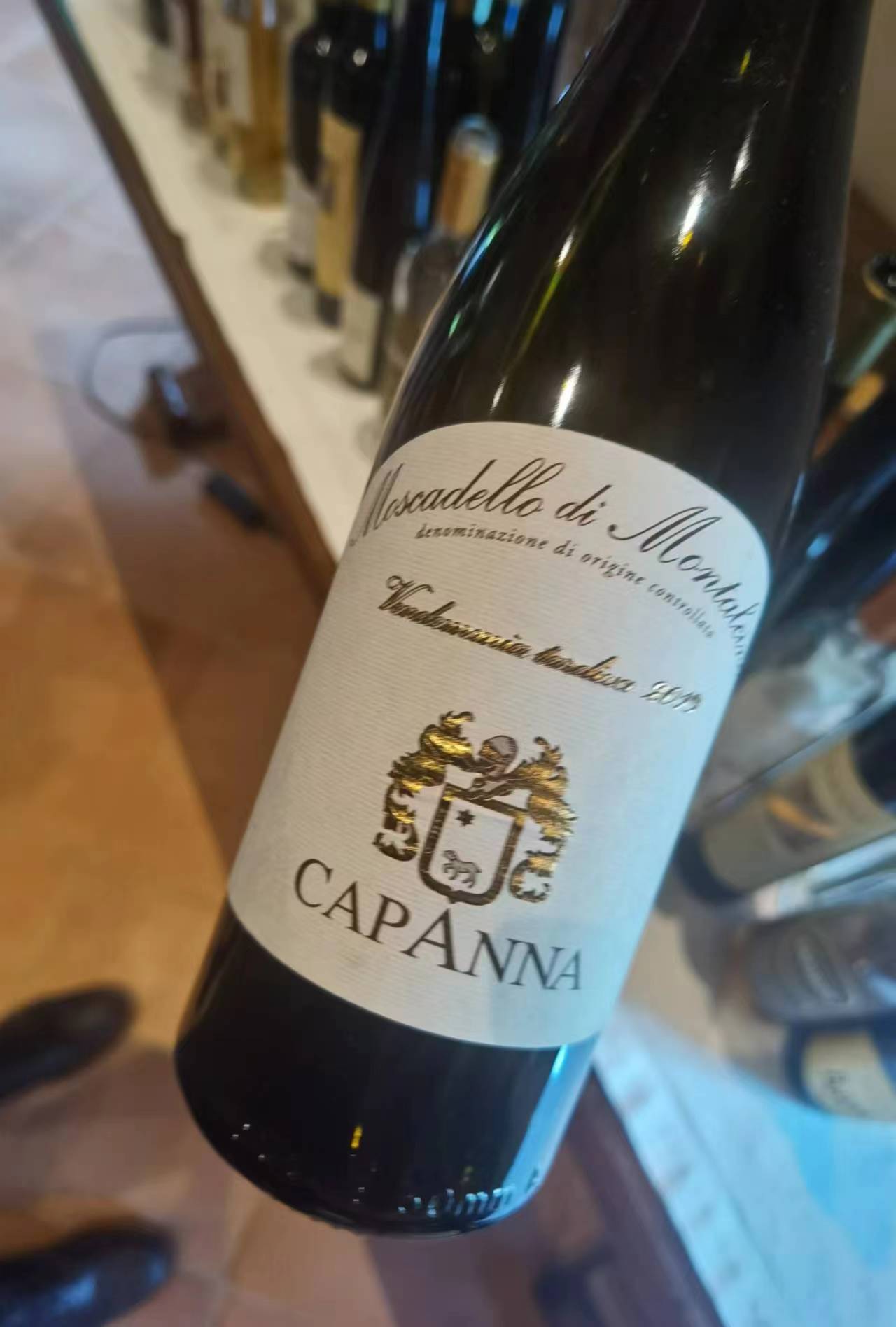
Capanna 2019 Moscadello di Montalcino Vendemmia Tardiva 95
Now this is drop.-dead gorgeous, what a wine! Good full luminous straw yellow with some gold. Very elegant nose, with hints of ripe pear, orange marmelade, acacia honey, grapefruit skin, lime, jasmine and sweet spices. Then also refined in the mouth, with similar flavours to the aromas, finishing long and multifaceted. For all its residual sugar (149 g/L, or in other words, not unlike a richer, sweeter Sauternes), this is very light and lively on its feet (the 5.1 g/L total acidity has something to do with this, obviously). Made from a loosely-bunched old native biotype, this is aged in 5-10 hL Slavonian oak casks for one year, then another six months in bottle. Drinking window: 2024-2032.
Col d’Orcia.
Col d’Orcia 2016 Moscadello di Montalcino Vendemmia Tardiva Pascena 95
Very harmonious, the first sip tells you immediately that you are in the presence of something special. Vivid golden-yellow. Very orchard fruit dominated on the nose with little in the way of tropical fruit, this also boasts deep aromas and flavours of vanilla, cinnamon, mint and tangerine jelly. Then long and silky on the suave aftertaste, with marvelously well-balanced acidity and sugar. The acids are so well-integrated that it hardly seems like there’s any acidity at all to speak of, and yet this wine manages the neat trick of being neither heavy nor cloying. Sant’Angelo in Colle is a town already famous for being the production site of some of Montalcino’s best Brunellos, but it is also one of the denomination’s best sites of all in which to grow Moscato Bianco. (It can be successfully argued that the most refined Moscadello wines come in fact from these vineyards.) At Col d’Orcia, they usually harvest the Moscato Bianco in the first ten days of September usually in two to three different passes (or tries) to source grapes of varied levels of sweetness and of acidity. The wine is stainless steel-fermented and spends one year in oak barrels. Col d’Orcia made this wine for the first time at the end of the 1980s (up to 1985 they made a Vìn Santo instead). By the way, this wine is called Pascena in honour of the place the grapes grow (Pascena is a lieu-dit, or toponym). Drinking window: 2024-2032.
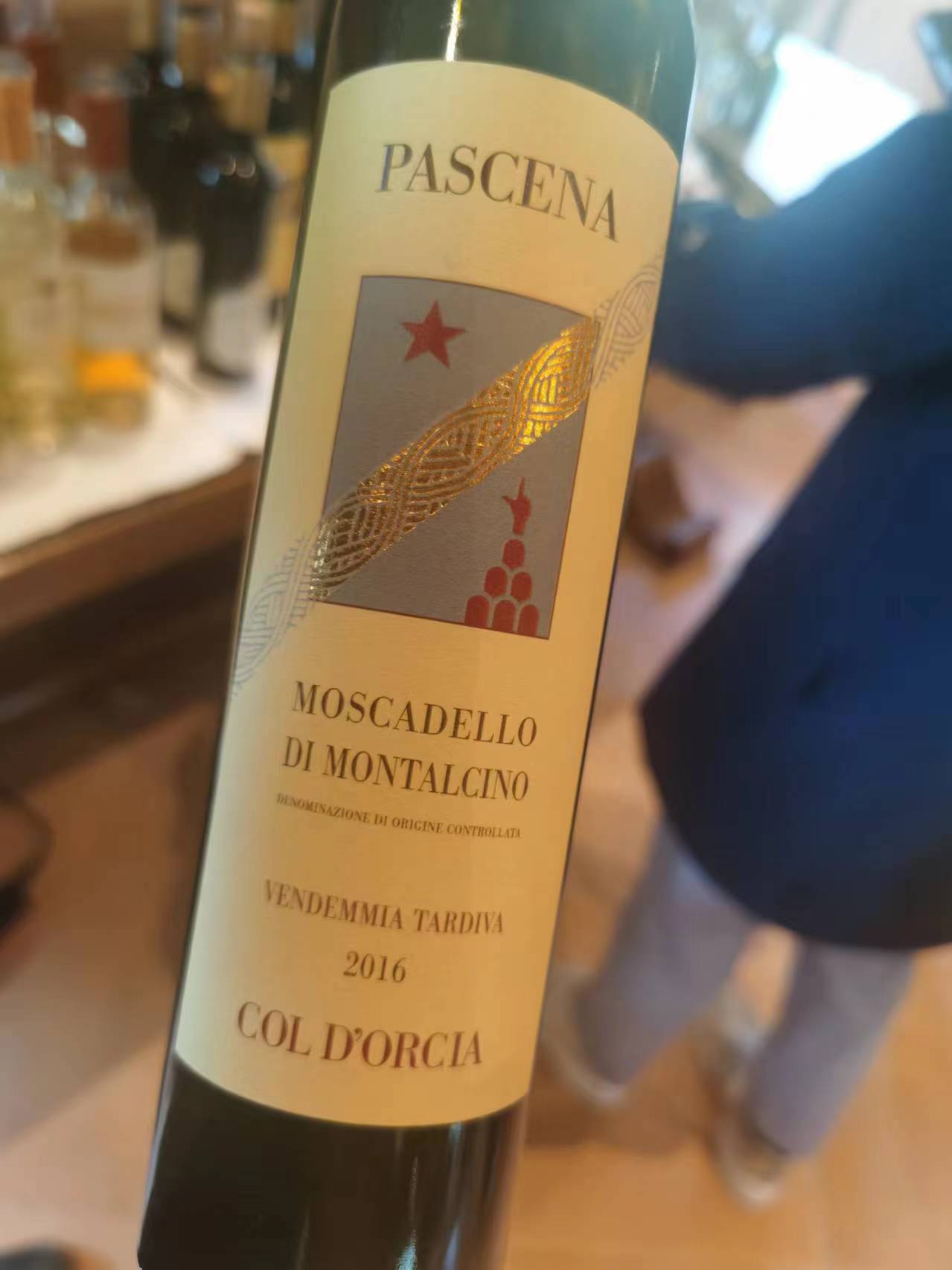
Col d’Orcia 2010 Moscadello di Montalcino Vendemmia Tardiva Pascena 94
Amber-tinged golden yellow. Intense, dusty aromas and flavours of tropical fruit, with layers of honey and orange marmalade on the nose and palate. At once dense but fresh (123 g/L r.s. and 4.5 g/L total acidity), it finishes long but a little more diffuse than I expected. Still very young, this was partly barrel-fermented and partly in steel, then aged for one year in barriques and six more months in bottle. Drinking window: 2024-2030.
Il Poggione.
Il Poggione 2023 Moscadello di Montalcino Frizzante 92
If you like Moscato d’Asti, then this bright bubbly from Il Poggione makes for a delicious alternative. . Vibrant pale straw-green with a steady stream of small bubbles. Very pure and focused on the nose and in the mouth, with clean, precise and yet rich and ripe aromas and flavours of apricot, buttercups, orange nectar and vanilla. A hint of fructose remains behind thanks to the blocking the fermentation to leave this sweet and low in alcohol. These Moscato Bianco grapes grow at only 127 meters above sea level, and yet this bubbly boasts 6.5 g/L total acidity; vinification is by the tank (autoclave) method in the manner of Prosecco and most Moscato d’Asti. Readers should note that this is one of the best Moscadello di Montalcino wines Il Poggione has ever made. Drinking window: 2024-2027 .

La Poderina.
La Poderina 2018 Moscadello di Montalcino Vendemmia Tardiva 95
Golden yellow. Caramelly but delicate aromas of crystallized tropical fruit and vanilla, complicated by hints of lemon pepper, jasmine and menthol and a solid late hit of marmelady botrytis. Very long and suave with plenty of acidity to buffer the 180 g/L residual sugar that leave an impression of sweetness but no heaviness whatsoever (this has 6.5 g/L total acidity). Note that back in 2018 this wine was still being fermented in stainless steel only, but nowadays recent vintages are fermented and aged in oak (since 2020, the fermentation takes place in tonneaux and aging lasts about 18 months in oak barrels. While the 1998 and 1999 La Poderina Moscadello di Montalcino remain two benchmarks of the very noble rot-affected style of this wine, since 2009 noble rot has been harder to come by. For many in the know, La Poderina has long made the best Moscadello di Montalcino of all (and I would add that is their best wine today). Unfortunately, the estate has reduced the hectarage devoted to Moscato Bianco (from 4.5 hectares, the Moscato Bianco vineyard extension at La Poderina has been reduced to only two hectares) but there is one especially interesting vineyard planted on very rocky soil that helps give some minerality and adds greater equilibrium. Drinking window: 2024-2034.
Mastrojanni.
Mastrojanni 2016 Vendemmia Tardiva Toscana Botrys 93
Golden orange colour. Penetrating aromas of apricot, peach jam, honey and pineapple. Spicy but suave on the dense palate, with sweet orange nectar and sweet spice flavours that are long and clean. Boasts admirable sugar-acid balance (134 g/L r.s. and 6.15 g/L total acidity and 3.6 ph) making this easy to drink, as it leaves the mouth feeling clean and fresh. The wine is a blend of mostly Moscato Bianco with a small percentage of some local Malvasia Bianca Lunga and Sauvignon Blanc (Gabriella Mastrojanni’s favourite grape and wine, so a little Sauvignon was always included in the blend), so it’s not a true Moscadello di Montalcino (which has to be 100% Moscato Bianco wine) but it broadcasts a very strong white Muscat aroma and flavour nonetheless, fitting right in with this Moscadello di Montalcino crowd. The first vintage of Botrys was the 1997 (at the time it was only Moscato Bianco and Malvasia Bianca Lunga; Sauvignon Blanc was added only in 1999) and it was an IGT Toscana wine made by air-drying grapes (by hanging them up from the rafters in the winery buildings). Since 2003, the wine has become a late harvested wine becoming a Moscadello di Montalcino Vendemmia Tardiva (roughly only about 800 bottles made). Despite its name, noble rot has nothing to do with this wine (the word “botrys” actually refers to a bunch of grapes). The grapes were sourced from vines growing at 280-340 meters above sea level that make up less than one hectare (there’s three plots of Moscato Bianco: just imagine that at Mastrojanni they own 40 hectares with 36 different vineyards). The grapes for this wine were late harvested on October 10. Drinking window: 2024-2034.
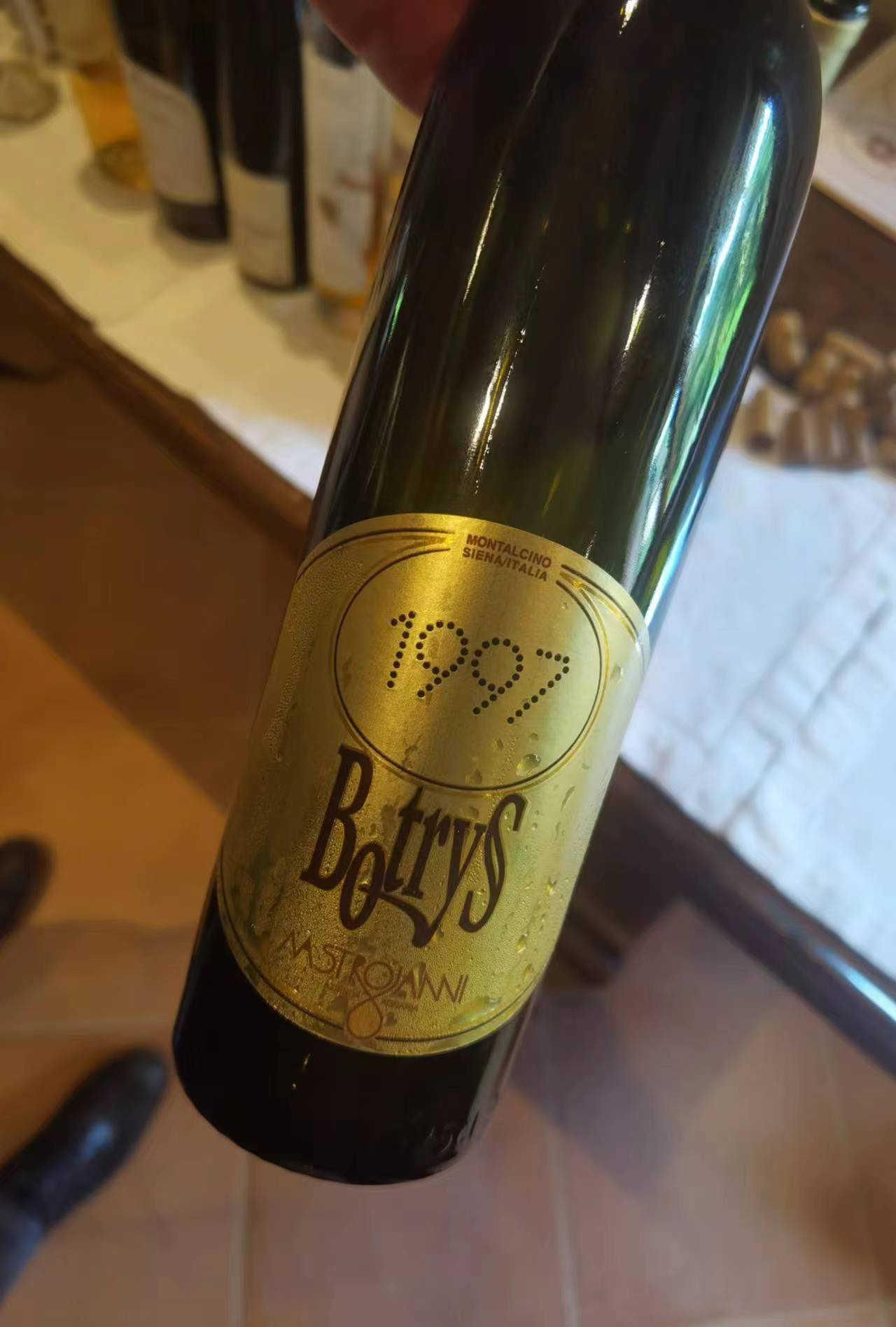
Mastrojanni 1997 Botrys Toscana 93
Deep amber colour. Sneaky concentration to the aromas and flavours of strawberry, apricot jam, candied apricot, peach, and honey. This boasts great freshness and a rich, glycerol, chewy crystallized fruit. I loved this, though I have to admit that colour, aromas and flavours are more reminiscent of a Vin Santo than they are of a Moscadello di Montalcino. Spent 24 months in barrique and tonneau. Drinking window: 2024-2028.
Mocali.
Mocali 2016 Moscadello di Montalcino 90
Clean and fresh this lightly sweet wine doesn’t remind me particularly of Moscato Bianco or of strongly aromatic grape varieties with its with its mostly herbal and lemony aromas and flavours. Still, it’s hard to argue with how delicious this rich dense and long wine is; The grapes grow at 350 metres above sea level, the wine was barrel fermented and spent another 24 months in oak barriques (the fermentation and long oak aging help explain in part why the wine doesn’t seem so aromatic). About 2000 half bottles made. Drinking window: 2024-2027.
Mocali 2015 Moscadello di Montalcino 88
Very subdued herbal and floral nuances on the nose and in the mouth; once again, this doesn’t strike me a having a strong white Muscat personality. Closes long and clean, with a rising bittersweet and linear delivery of white fruit nuances. To be clear, this is a good wine, but I’m not sure it represents what I like about Moscadello; others might like this more than I. The grapes grow on about 0.5 hectares, the wine is barrel fermented and aged 24 months in barrique. About 2000 half bottles made. Drinking window: 2024-2027.
Silvio Nardi.
The Silvio Nardi grapes grow at about 300 meters above sea level near the course of the Ombrone River that flows below; it’s a small hill with vines of only Moscato Bianco, selected from Col d’Orcia and planted at the beginning of the 2000s and replanted in 2003. The wine is made by severing the grape bunch stalk so that the grapes air-dry directly on the vine, the wine is barrel-fermented. The winery makes the equivalent of 2000 bottles/year.
Silvio Nardi 2022 Moscadello di Montalcino 91
Bright golden-tinged straw colour. Ripe aromas and flavours of papaya, orange peel, grapefruit pith and iris. Offers a noteworthy bitter oaky nuance in the mouth, but also very good lift and complexity thanks to floral and orange liqueur notes. This boasts a curious note of Vermouth on the long spice-accented finish. Drinking window: 2024-2028.
Villa Poggio Salvi.
Villa Poggio Salvi has long made very good, off-dry to frankly sweet Mosacdello di Montalcino that have noteworthy lift. The family bought the estate in 1979 and there was a Moscato Bianco vineyard on the property already then, but it needed to be replanted.
Villa Poggio Salvi 2021 Capanna Moscadello di Montalcino Aurico 93
Bright burnished pale gold. Caramel and ripe yellow fruit vie for attention with coffee and chocolate on the nose and in the mouth. Closes long with an inviting note of peach jam and seems less sweet than its 100 g/L residual sugar might lead you to think. Generally speaking, the 2021 vintage gave more concentrated Moscadello wines than usual, and this wine shows that well. Made from grapes picked in 0.5 hectares harvested in mid-October from a site at 450 meters above sea level. Barrel-fermented, the wine ages in small oak barrels for about 18-24 months. Only 1200-1300 bottles made a year of what is a very pretty wine that would work very well as an aperitif too. Drinking window: 2024-2028.
Villa Poggio Salvi 2013 Capanna Moscadello di Montalcino Aurico 93
Nice amber-hued pale golden yellow. Slightly reduce on the nose, the reduction clears only with plenty of aeration leaving behind hints of grilled nuts, vanilla, cumin and oak. Cocoa, oaky spices and walnut husk complement string notes of Christmas spices in the mouth, where it is characterized by mostly caramel and spicy flavours instead of citrus fruit. Boasts 100 g/L r.s and very good balance and length. The grapes grow at 450 meters above sea level and the wine was aged for 24 months in oak barrels. Drinking window: 2024-2028.
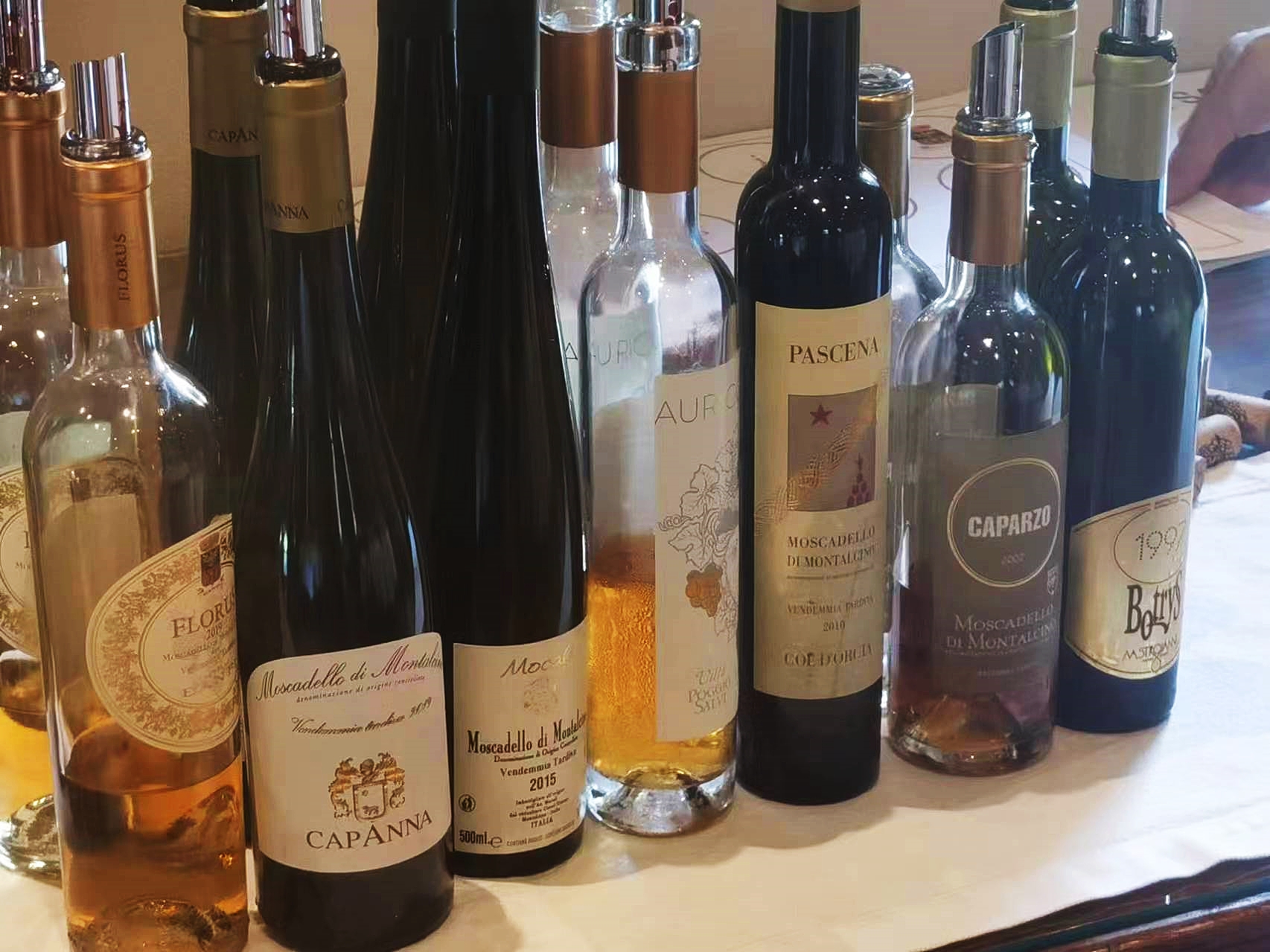

 English
English

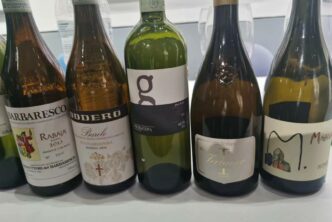


Wonderful article, Ian. Thank you. I’m keen to explore the wines, especially when back in Montalcino this coming fall. By the way, you have no idea (well, now you do) how excited I am about your next book about Montalcino and it’s beautiful wine. Do you have a sense for expected publication date? Some time in 2025 perhaps? All the best, Robert
Thanks for your interest. I currently am putting the finishing touches on a book/study guide on Italian wines based on wines by terroir rather than grape varieties, so it is the ideal complement to the first book/study guide published a couple of years ago that was devoted to wine grapes, The Grapes and Wines of Italy: The Definitive Compendium Region by Region. Next up, out sometime thiis December, will be the humongous Barbaresco Terroir: Grapes Crus People Places. If you have seen the BaroloTerroir book (also available through Amazon), then you know what to expect.
All my books take about four years to write becuae of the research and winery visits involved needed to update what I started writing down over twnety years ago, so honestly I don0t think i can come out with the Montalcino book before 2026. In the emntime, in 2025, there will be another smaller one out, maybe two, that Michele Longo and i have been working in for two years, but being much smaller tyopes of books, we can maybe come out with one of them in 2025. Thanks so much for your patience and interest,
ian
Wonderful, Ian. Thanks for the detailed response. I look forward to all of your books, they perfectly compliment, educate and heighten my growing love for Italian wines. You’re a wizard, right? Admit it!!